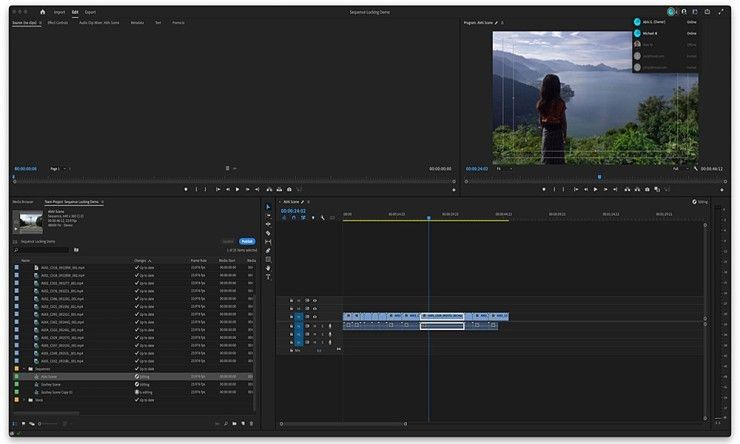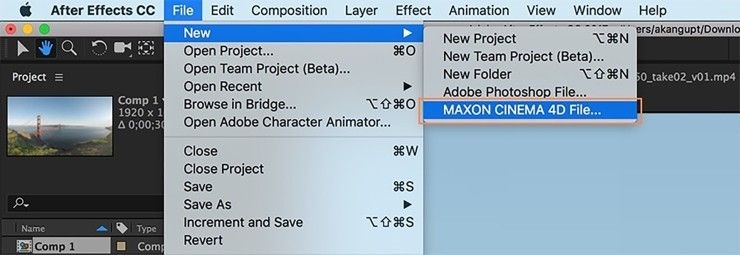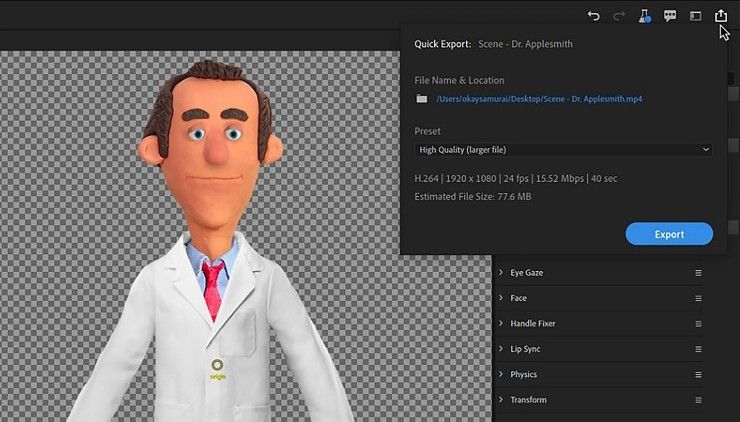
Thanks to Adobe, the RED V-Raptor 8K and Komodo cinema cameras arrive in the cloud.
Through its annual winter update, Adobe has announced some welcome updates that bring in a new future for both Creative Cloud and Frame.io for Camera to Cloud. It starts with the release of Camera to Cloud for the RED V-Raptor and V-Raptor XL 8K Cinema cameras, plus expanded support for ARRIRAW, Cinema 4D visual effects software, and collaborative editing features through Premiere Pro.
Whether we like it or not, the future is in the cloud, and Adobe is here to bring us into the light.
With everything new on the table, Adobe is working hard to ensure creatives get their money's worth. Let's investigate some more.
Creative Cloud Updates
The updates to Creative Cloud offer several new features for Premiere Pro 23.1 and After Effects 23.1, and a modest housekeeping update to Character Animator 23.1. The expanded features now available to Creative Cloud users include the following.

Premiere Pro 23.1
- On-screen Text to Graphics conversion - Users can now create stylized animated graphics of text from captions greeted with the speech-to-text feature in Premiere.
- Collaborative Editing - Team members can be added directly from the header bar, giving them non-destructive access to original camera files and managing who is currently working on the team in real-time.
- Sequence Locking - Automatically locks an edited sequence to avoid conflicts and duplicate files. Users can also share changes with other collaborators using the Publish button and see a list of new changes so collaborators can update.
- Select toggle switches for multiple tracks - Users can now select multiple tracks within the timeline by holding the Ctrl/Cmd key for Windows or Mac, respectively, and enable, disable or even lock a track. Users can even make the track invisible to others on the team.
- Improved GPU deBayering for RED and ARRIRAW. Adobe has also expanded GPU deBayering support for the RED V-Raptor and V-Raptor XL with improved Metal interaction on Apple Silicon, as well as OpenCL for Windows. ARRIRAW also gets expanded source settings and real-time image playback at the highest possible quality.
- Other Premiere Pro improvements include expanded XAVC HDR support with Rec 2100 PQ HDR and both Intra and Long GOP encoding.

After Effects 23.1
Maxon’s latest Cinema 4D 2023 update now has tighter integration and enables users to work with native Cinema 4D files and 3D elements, then render them directly within After Effects.
Adobe was never a go-to choice for 3D artists, but with Substance 3D and now updated Cinema 4D integration, creatives have even more options. These will be rolled out between December 12th and 13th, 2022.

Character Animator 23.1
With Character Animator 23.1, Adobe has added support for recent macOS systems through Metal and Windows systems through DirectX 12. There’s also a “strength” parameter now in the Motion Library to control the behavior of tagged handles.
For the cost of Creative Cloud, the expectation was that the tools you use will constantly get updates and evolve to meet the needs of the creative. So far, Adobe has delivered on its promise, and we're excited to see these tools continue to grow with the filmmakers and artists that use them.
RED C2C Comes to Frame.io
“With the Camera to Cloud integration now built directly into the cameras, we’ve taken the next step toward the cloud-based workflow we’ve been envisioning—no additional hardware, and no hard drives required,” says Michael Cioni, Adobe’s Senior Director of Global Innovation. “This is more than just a technological first—it’s a snapshot of the way every creative will work in the future.”
As promised at Adobe MAX 2022, Adobe has expanded Frame.io’s Camera to Cloud access with support for the RED V-Raptor and V-Raptor XL 8K cinema cameras. Beginning today, Adobe and RED are now releasing a public beta of firmware for both cinema cameras for users to experiment with.
After exhaustive testing in-house, which included using the entire C2C workflow to create the Adobe Max Announcement video last October, the company found that the Frame.io integration was easy to use, extremely fast despite the massive amounts of data it was uploading, and with a robust connection that minimized congestion and downtime.

The update will enable camera operators to log into their Frame.io accounts and upload 8K original camera files in either REDCode RAW or high-resolution proxies up to the cloud.
Connecting is easy as the camera operator or assistant navigates to the Network Offload option in the menu settings, then selects Frame.io and connects.
The camera will then send the user a six-digit code to a mobile device that is input into the camera and complete the handshake. All that remains is to select which files to transfer, and it’s ready to go. Users will need a high-speed internet connection that supports a minimum upload speed of 800 Mbps to upload the OCF camera package, which includes the 8K RAW R3D file, a CDL, ProRes Proxy, a wav audio file, and any custom LUT associated with each take.
All told, this could be up to 4TB of data with every upload. If you're on WiFi, be sure to get enough bandwidth from your provider.

Oh No, My Bandwidth!
If you don't, or you have other challenging bandwidth situations where less networking infrastructure is available, users can choose to simply upload the ProRes proxy workflow with a minimum upload speed of 80 Mbps. The result is that post-production can be happening concurrently with principal photography, and with dailies being available for review to anyone on the team, all around the world.
Adobe calls this integration a key milestone in making the reliance on a hard drive or media card-based workflows obsolete and provides the added ability to send original, uncompressed camera files with frame-accurate high-resolution proxies using high bandwidth networking of WiFi or ethernet up to the cloud when a network infrastructure can support it.
And with the process happening after each take, the latest original camera files are automatically made available to the post-production team within minutes, rather than hours or days.
Making Movies in the Cloud
Productions no longer have to make time in their workflow to offload camera takes from media cards and then ship them to a post house for ingesting and post-production. The files appear on the network after upload, for any approved team member to edit, color correct, and even add visual effects in a non-destructive manner. To take full advantage of the Camera to Cloud workflow, users must have subscriptions to both Frame.io and Adobe Creative Cloud.
Filmmakers are encouraged to download the firmware update and experience the cloud-based workflow for themselves. However, be advised that the firmware is in public beta and is not in a final format, so users may want to wait until any current project is completed before attempting to update the Camera to Cloud workflow.
The public data of the RED V-Raptor and V-Raptor XL Firmware is available now from the RED Downloads website, while the Creative Cloud 23.1 update will be available through Adobe Creative Cloud beginning on Thursday, Dec. 8.
Your Comment